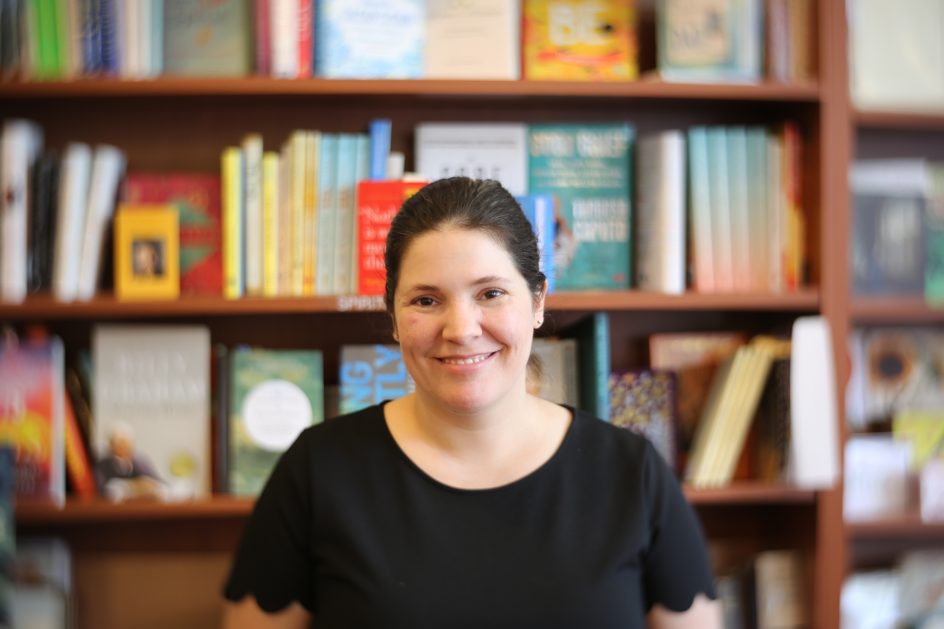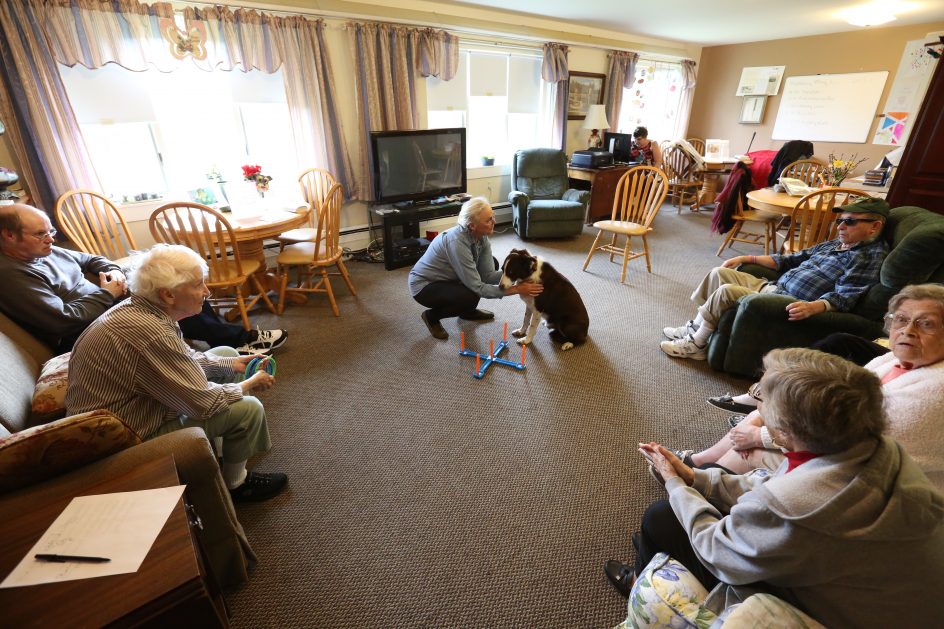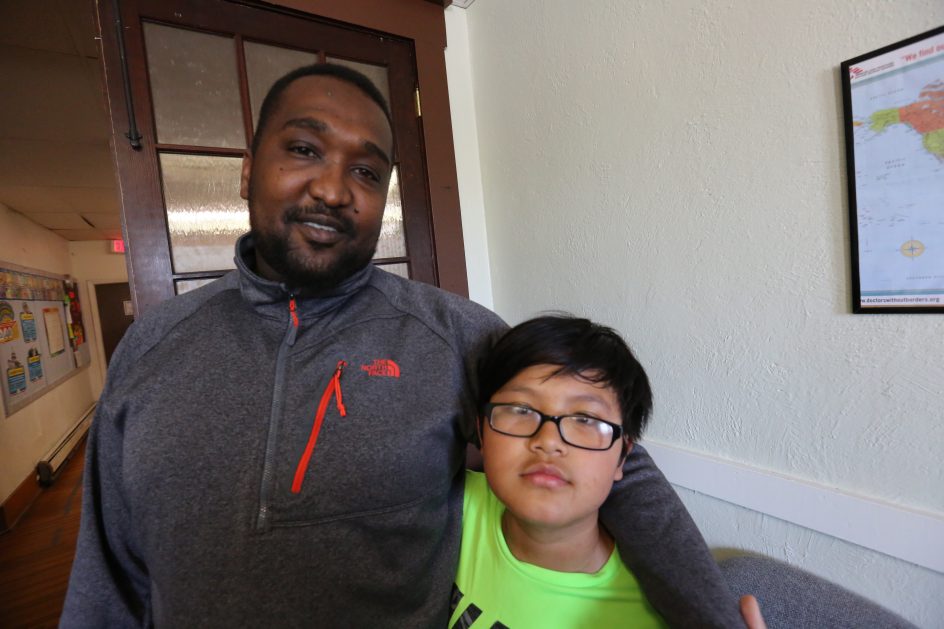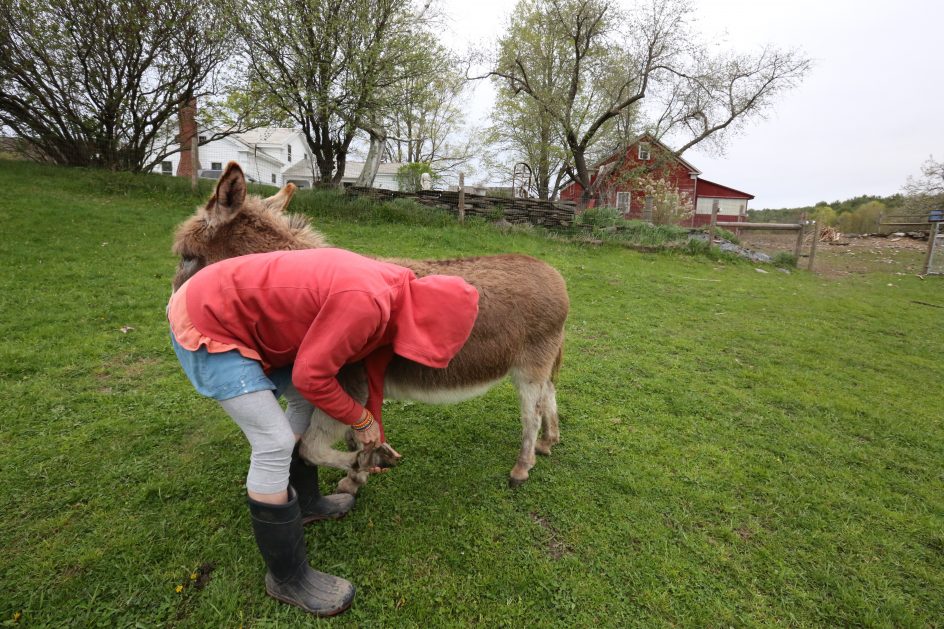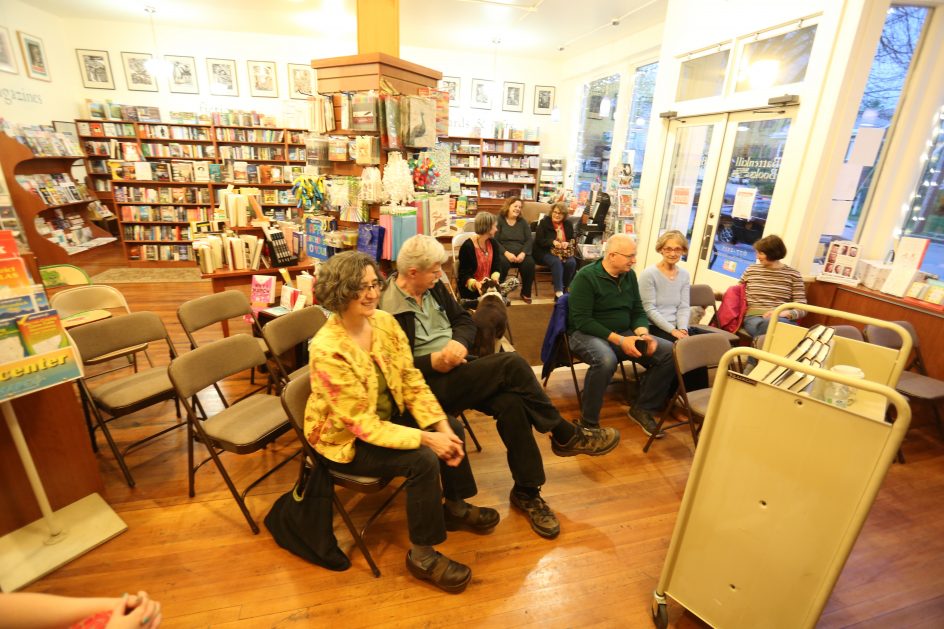
“Success is not final, failure is not fatal. It is the courage to continue that counts.” – Winston Churchill.
We had a quiet but lovely reading last night at Battenkill Books to kick off the publication of “Talking To Animals: How We Can Understand Them And They Can Understand Us,” out today wherever books are sold.
This is my hometown bookstore and Connie and I were expecting a substantial crowd to launch my discreet book tour, but there were only eight people in the audience, including Maria (and Red and Fate.)
Of course I would write about it, I have no secrets, and thus am free. I am only embarrassed by lack of effort on my part.
I confess when I came in for my grand entrance with the dogs and saw Connie and her mother alone in the bookstore, I thought of that wonderful Tess Gerritsen line, “Only The Forgotten Are Truly Dead.”
When I first began writing books, I entered a vast Borders Store in Virginia, and there was not one soul sitting in a single one of the 200 seats neatly set up for my talk. I thought I must have come on the wrong night, but the embarrassed manager assured me this was the right night. Eventually, one elderly woman came in out of the cold night and sat in the very rear of the big room and waited. She looked homeless to me, her sneakers had big holes.
I told myself that I would act the same way if every seat in the room was filled, and I gave one of the best talks and readings of my literary life. By the end, two or three employees – ringers, I think, because they took their ID cards off – came in and I got some polite applause.
It is true that failure is always more public than success, that was a good lesson for me.
That night, I resolved to be the same way when there one as when there is an adoring full house.
Book readings are like that, some take off, some don’t. But you can’t short the people who show up.
Writers are complex, one I knew always quoted Mother Teresa when he came into an empty book store: “Being unwanted, unloved, uncared for, forgotten by everybody, I think that is a much greater hunger, a much greater poverty than the person who has nothing to eat.”
I told my friend Mother Teresa was talking about the poor and the hungry, for God’s sake, not dramatic and self-absorbed writers. She was all about perspective.
An empty bookstore is not a tragedy. It is part of the writer’s life, fearing being forgotten. Any man or woman who dares to open his soul to the world will experience it, and more than once.
I define myself not by how I deal with great success, but how I deal with different kinds of failure and rejection. Everything I want is on the other side of fear.
This is also part of the way we live in America now, we are letting go of the material world for the realm of screens and images. Everyone sees it, we talk to one another but we no longer know one another.
This is my 25th book, and I have been to a lot of great readings and a lot of grim ones, but I know the era of readings is fading, and that is the true nature of life, even in my own hometown. It doesn’t mean more than what it is.
I loved the crowd that came tonight, there were a number of true friends, people I loved, and I smiled every time I saw them. I remember too many times when there was no one for me to love, or to come to my readings, and I am fortunate to be alive and loved on the earth. This is my 25th book. I can die happy.
I’m not sure why the crowd was so small – the smallest ever for me in my hometown. It could have been the awful storm that hit yesterday, which caused a great deal of damage, or it could have been the rain or it could have been the angels having a bit of fun with me.
Or I could, of course, be over, the secret dread of every creative person. But honestly, I don’t think I’m there yet.
The truth is, we’ll never know. I’ve been on tours with 200 people one night and five the next day. Nobody ever knows why. Tomorrow, I’m coming into Battenkill to sign 200 more books to be shipped out. Anyone who complains about that is a fool.
The small crowd didn’t stop us from having a great deal of fun, intimate gatherings are often the most meaningful. I can look into the eyes of people and know right a way how I’m doing. I liked what I said about the book. I will perfect it a bit more with each reading. But it went well.
In a few years I doubt there will be physical book readings at ll, only video conferences, book readings in the digital realm. I don’t do nostalgia, I had my turn, it is somebody else’s turn.
The material realm is giving way to the digital.
More and more, people go on Facebook or Instagram or Snapchat to meet and socialize with people, not to physical gatherings in the physical world. Art least 100 people told me they were excited to be coming to the reading and couldn’t wait. But I know that to be Hollywood agent talk, I know they mean to, but life often intercedes or distracts.
There are countless good reasons to stay home.
I am not into nostalgia, the days when I was driven around in limousines to four star hotels are long gone. It was common just a few years ago to face huge and adoring crowds – 1,200 people came to see me in Forth Worth, Texas one night – but I can’t say I miss the old days. This is my time. I am happier and more creative now, for sure. I have my blog, the center of my creative life.
I am content with where I am. And I am still at it, I have yet another book to finish, and more readings ahead of me. This is the fascinating part, more than four million people read my writing regularly, but it is an effort to get a dozen to come and hear me talk. I have never been read by more people in different places.
This is America today, I think.
And then there are sales.
The reports about my book sales are good. Connie has taken more than 700 pre-orders, a record for her store. My publisher e-mailed me tonight to say they have had a good response from their accounts. Barnes & Noble has ordered 3,600 copies and Amazon took 2,200, independent book stores have ordered 1,600 copies of the book.
Those are good numbers these days so early on.
My editor said Simon and Schuster has printed 14,000 copies of the book, he thought a second printing was “imminent.” I hope so. Publishers have to fight for every single book. Mr. Trump is harming book sales by taking up much of the media that would have gone to culture and book coverage. In the media, it is pretty much all Trump all the time. That is hurting a lot of young writers. Maybe he will be quiet for a week or so. It does not seem likely.
Writers always say that you can tell who your friends are by who shows up at readings, but I do not feel that way about it. Failure is never fatal in itself, I think, but failure to change or accept change is deadly. One of my first writing students, the very gifted John Greenwood, a truck driver turned brilliant creative, drove two hours to see me. I really appreciated that.
I don’t take it personally. I am willful and determined, and when I was eight years old I decided to be a writer one day, and decades later, that is what I am. And that is what I will be when I die.
Readings are important to authors. We work on books for years, and first night readings are a big deal, a coming out, the first opportunity to talk about our books and gauge the response in the eyes and body language and yawns of the audience. At readings, the book comes to life and becomes real. That happened to me at Battenkill tonight.
The book is alive, warm and very real.
There was only one yawn tonight, and when I saw two, I wrapped it up, it meant 25 per cent of my audience was tired. Red was stellar as usual, politely greeting everyone. And young Fate, at her first reading, jumped up on every single person and then lay down at Maria’s feet and went to sleep. A triumph.
I talked about the visualizations in the book, and the story of the New York Carriage Horses, and the urgent need to understand the real nature and needs of animals if they are to remain among us in our world. I talked about my efforts to communicate with animals, and to listen to them.
My editor said the book was full of “heart and wisdom,” and that feels good to hear.
He said there was growing excitement about my next book “Lessons From Bedlam Farm,” and that was wonderful to hear.
But the next few weeks belong to “Talking To Animals.” I will keep pushing those numbers up, I hope. I want that second printing, and also a third one. I intend to be relevant and to write books to the last gasp, even when nobody comes out.
If you wish to order the book through Battenkill Books (it is no. 1 in “Hot New Releases”), you can do so here. I will sign and personalize every copy and Connie will give you a lovely tote bag for free.

